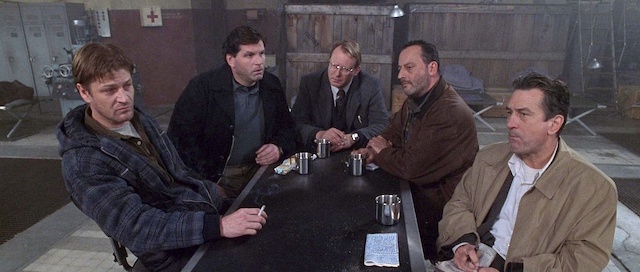Beyond the Protagonist: Supporting Characters in Mystery Novels

As a mystery writer, your stories come alive through a well-crafted protagonist, whether that’s a seasoned detective, an inquisitive journalist, or an amateur sleuth. Your main character offers the lens through which your readers navigate the winding path of your narrative. Solidifying their journey, however, takes more than just your leading hero. But, have you ever pondered the unsung roles that echo behind your protagonist?
Meet your supporting cast – the secondary characters who often remain in the metaphoric backstage of your mystery novel. They are the ones who can effectively amp up the suspense, mislead your readers on a wild goose chase, or unexpectedly unravel the carefully knitted enigma. Their silent arrival and subtle interactions might seem like minor elements, but these fine details often culminate into the grand surprise your readers yearn for.
The essence of mystery writing lies in balance. How well you handle your supporting characters can make the difference between a predictable narrative and a gripping page-turner. This article aims to help you delve deeper into those unheralded roles and how you can proficiently utilize them to create a more engaging, unpredictable, and exciting mystery novel.
Supporting Characters – Definition and Examples
As a mystery writer, shaping the protagonists is just as intriguing as watching them grow in the minds of your readers. However, the secret ingredients that infuse richness and unpredictability to your narrative are the supporting characters. These characters may not take center stage, but their impact on the plot, setting, and main characters can be significant.
Supporting characters are the secondary players that populate your novel. They might be the protagonist’s best friend, the dubious neighbor, the seemingly benign librarian, or even the local barista with an uncanny knack for gossip. They provide texture and depth to your story, making your imaginary world more believable and connected.
Take, for example, Dr. John Watson from Sir Arthur Conan Doyle’s Sherlock Holmes series. Watson is a supporting character, but he does more than provide medical guidance and act as a sounding board for Holmes’ deductions. Through Watson’s eyes, readers gain a grounded perspective that counterbalances Holmes’ extraordinary analytical skills. Likewise, Captain Hastings in Agatha Christie’s Hercule Poirot series plays a similar role, helping to humanize the eccentric detective.
Luke McCallin writes a pivotal early scene in The Man from Berlin when Abwehr Captain Gregor Reinhardt interviews an Austrian woman living in Sarajevo. Surrounded by her knick-knacks and pre-war furniture, in the middle of her narrative she divulges a key clue to tracking down a killer. She never appears again, but we have a sense of how Reinhardt interviews witnesses and how he uses the information he gleans.
In essence, supporting characters are there to support—but not just the protagonist. They support your story as a whole. They serve various roles—from dropping important clues, witnessing critical events, creating red-herrings, to sometimes being the perpetrator themselves, all contributing to the intriguing maze that a mystery novel is.
Power and Role of Supporting Characters
Developing the supporting characters in your mystery novel is akin to adding hidden trap doors and concealed passageways to a grand mansion of mysteries. You, as the mystery writer, masterfully manipulate these figures to highlight or obscure the clues, and construct a narrative that keeps your readers on their toes.
Subtlety is a key quality when using supporting characters to provide clues. They might have a piece of information or observe something which, though appearing inconsequential at first, assumes great importance as your story unfolds. For example, a brief, casual comment by a minor character could later be revealed as central to solving the mystery.
Another enthralling aspect is the employment of red herrings. Supporting characters can be perfect vehicles for such diversions, seemingly implicated in the mystery but only serving to divert attention from the true perpetrator.
The interaction of supporting characters with your protagonist is another aspect demanding your attention. They play substantial roles in character development, be it through conflict, camaraderie, or mentorship. Their nuances and confrontations can yield powerful insights into your protagonist, deepening her or his character arc, strengthening the emotional bond with your readers.
Perhaps the most fascinating potential of a supporting character is the surprise factor. By keeping a supporting character under the reader’s suspicion radar throughout the narrative, you can reveal them to be the unexpected mastermind in the climax, adding an electrifying twist.
Supporting characters are much more than secondary figures. They possess an uncanny ability to amplify the mystery’s depth, steer the narrative, and provide your readers with a rich, spellbinding experience.
The Influence of Supporting Characters on Readers
When you focus on the development of supportive characters, you unfurl a multi-layered, complex narrative that engrosses your audience. This focus significantly influences how readers navigate the twisted lanes of your mystery novel, heightening their engagement considerably.
A well-rounded supporting character directly appeals to the psychological facets of your readers. They serve as relatable figures, contrasting the often extreme genius or persistence of the protagonist. The everyday nature of these characters makes them accessible, and your readers can easily resonate with them, making the mystery more enthralling.
Supporting characters are also be instrumental in creating dramatic plot twists that leave your readers in awe. For instance, when a supporting character with little suspicion or scrutiny suddenly reveals a crucial piece of information or turns out to be the mastermind or accomplice, it can drastically deflect the reader’s earlier interpretation of the narrative.
These characters play a significant role in setting the atmosphere of your novel. A quirky small-town inhabitant, a mysterious stranger, or a suspicious yet charismatic friend shapes the mood, thereby enhancing the reading experience. These characters can add humor, suspense, drama, and gloom, contributing to a well-rounded narrative and making your mystery novel more absorbing.
Developing strong supporting characters forms an engrossing tapestry that complements the centerpiece protagonist, driving emotional responses and reader engagement, and filling the narrative with unexpected moments of surprise and satisfaction.
Supporting Character Examples
Finally, having defined and examined the roles of supporting characters, it’s time to delve into the practical world of their application in some of the legendary mystery series.
A. Analysis of supporting characters in selected mystery novels:
1. Hercule Poirot series by Agatha Christie: Captain Arthur Hastings, Poirot’s steadfast friend serves not only a chronicler of Poirot’s extraordinary adventures but frequently finds himself in the mix of the investigations. The character’s earnestness and honesty often fit the pattern of a dependable sidekick, drawing a stark comparison to Poirot’s eccentricities and making the narrative more engaging.
2. Sherlock Holmes series by Arthur Conan Doyle: Dr. John Watson, the epitome of a trustworthy comrade and narrator to Holmes’ exploits, provides the reader with a sense of stability. His character often mirrors the readers’ bewilderment and admiration for Holmes’ ingenious observations, which contributes to the immersive experience.
Hastings and Watson, while not the primary focus of their respective stories, hold the readers’ hand, guiding them through the maze of their companion’s remarkable intelligence. They often act as the bridge between the protagonist’s extraordinary mind and the readers, making the narrative accessible and enjoyable.
Although both Watson and Hastings play similar roles, their characterization varies. Watson, though baffled by Holmes’ brilliance, has a certain composure and understanding of his friend’s intellect. Hastings, on the other hand, readily represents the common man, often left astounded by Poirot’s clever deductions. Deploying these supporting characters in various shades can hugely impact how you connect with your readers.
Carefully created supporting characters stand as the sturdy pillars of a masterful whodunit, enhancing the allure of the protagonists, intriguing the readers, and adding unexpected depth and color to the narrative.
Behind Every Great Protagonist
You, as a mystery writer, do more than tell a riveting story about a crime and its solution; you create a whole world. An integral part of building these complex narratives remains by effectively leveraging the supporting characters around your protagonist.
Undeniably, they play a multitude of roles. They act as the puzzle pieces that flesh out the world beyond your protagonist, amplifying clues, creating deceptive trails, influencing the protagonist’s actions, and sometimes, even shocking your readers with unexpected revelations. In addition, they draw your readers closer into the mystery by providing a tangible and relatable perspective to the narrative.
The impact of supporting characters in mystery novels cannot be overstated. From the curious case of Dr. John Watson in the Sherlock Holmes series to Captain Hastings in Agatha Christie’s Hercule Poirot series, they play significant roles in enhancing the narrative, enabling reader engagement, and developing the protagonist’s dimensions.
In conclusion, mastering the art of creating compelling supporting characters can make your mystery novel go from intriguing to unputdownable, giving your readers a tale that keeps them guessing and engaged till the very end. Remember, your supporting characters hold the potential to transform your story, so use them wisely, and let them help your narrative shine.





